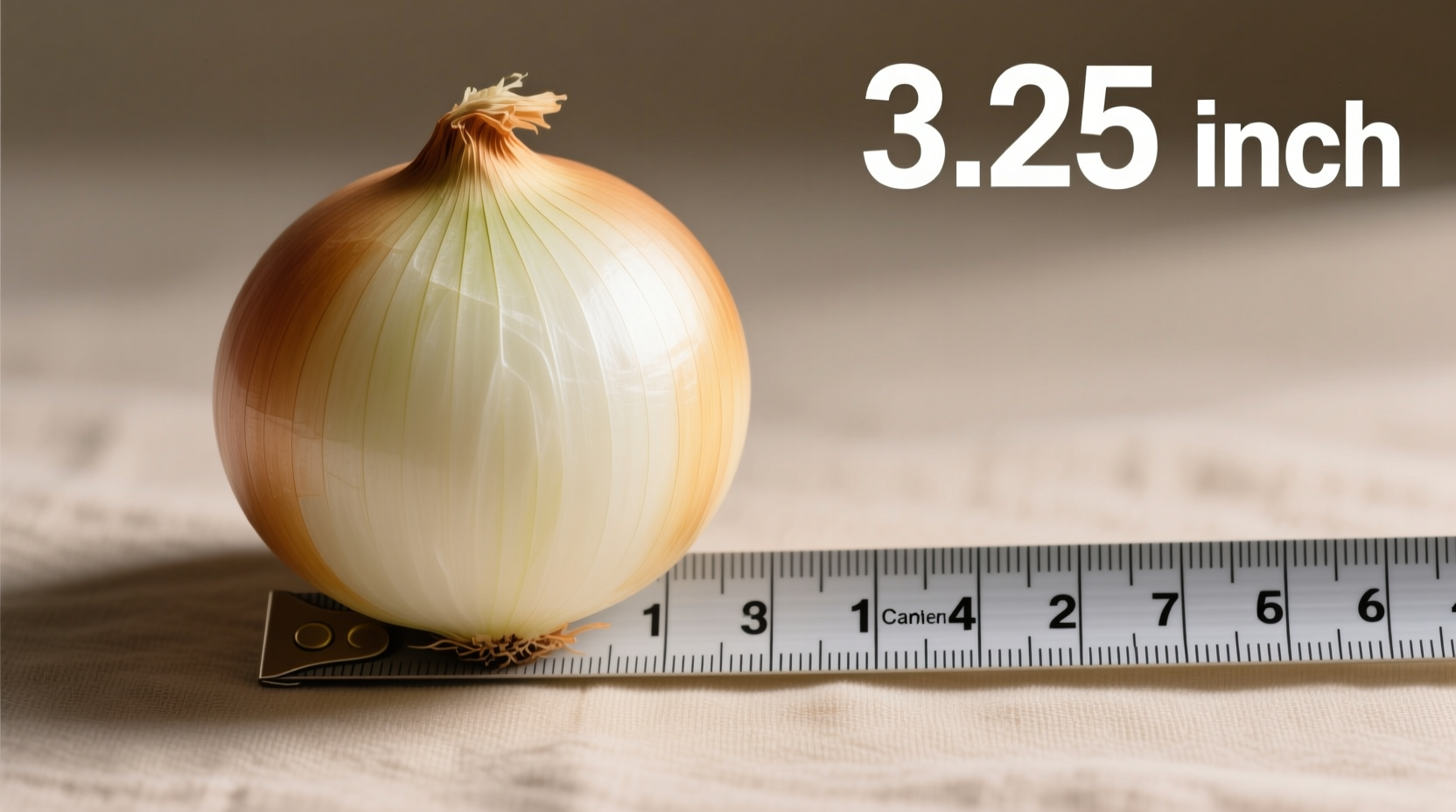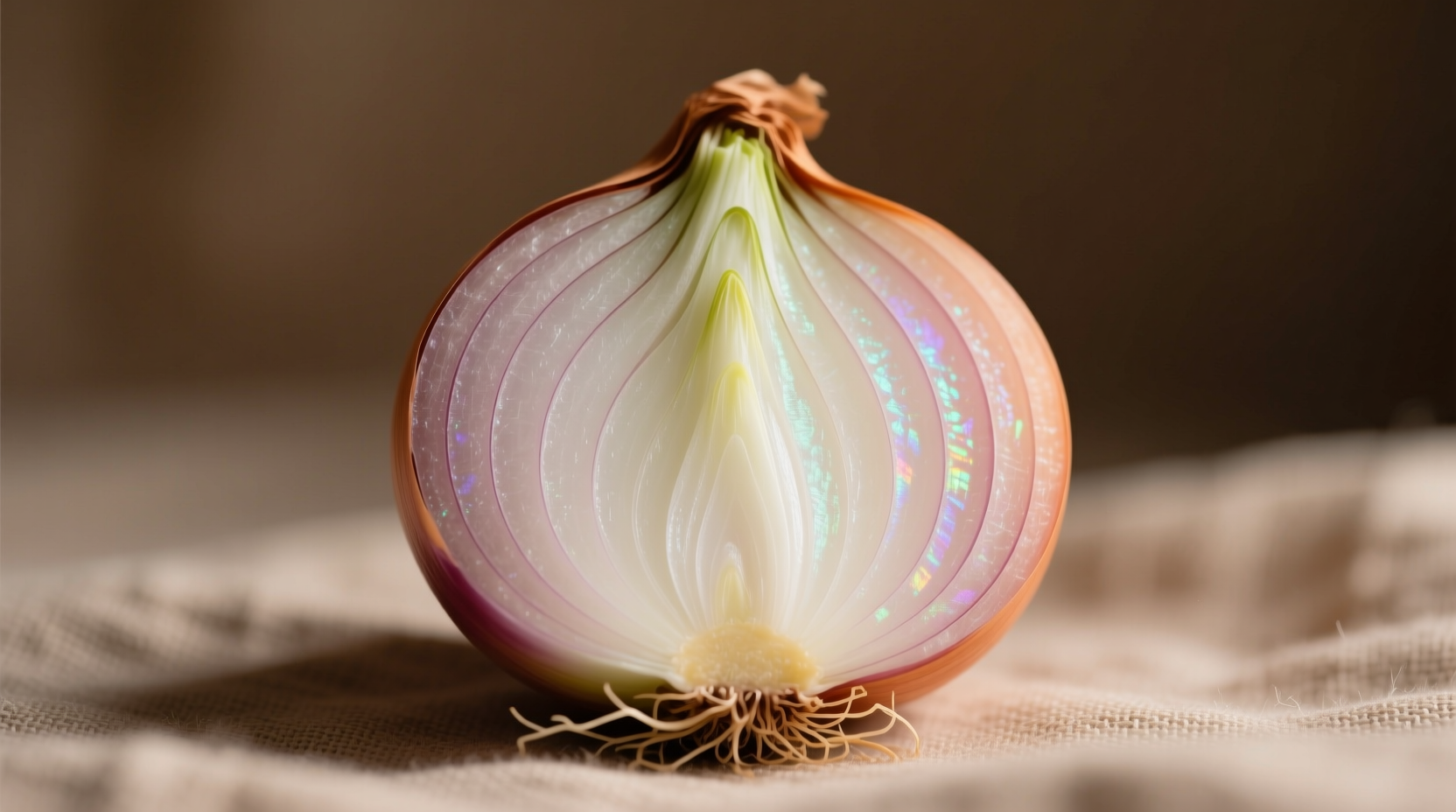Understanding onion sizing is crucial for consistent cooking results. While recipe developers assume you're using standard-sized produce, grocery store labeling can be inconsistent. This guide provides clear, measurable standards so you can confidently follow recipes and make appropriate substitutions when needed.
How to Identify a Medium Onion: Measurable Standards
Unlike vague terms like "large" or "small," medium onions have specific physical characteristics you can verify. The USDA's voluntary grading standards provide the most reliable reference for home cooks, though actual supermarket labeling varies.
| Onion Size | Diameter Range | Weight Range | Common Culinary Uses |
|---|---|---|---|
| Small | 2-3 inches (5-7.5 cm) | 4-8 oz (115-225 g) | Garnishes, pickling, single-serving dishes |
| Medium | 3-3.5 inches (7.5-9 cm) | 8-12 oz (225-340 g) | Sautéing, soups, stews, general cooking |
| Large | 3.5-4+ inches (9-10+ cm) | 12-16+ oz (340-450+ g) | Braising, roasting, recipes requiring bulk |
This standardized sizing chart reflects current industry practices documented by the USDA Agricultural Marketing Service. While supermarkets don't always adhere strictly to these measurements, they provide the most reliable reference point when recipe instructions specify "one medium onion."
When Onion Size Actually Matters in Cooking
Not all recipes require precise onion sizing. Understanding when size affects your dish helps you prioritize accuracy:
- Critical precision: Baking, canning, and preserving where acid-sugar ratios matter
- Moderate importance: Soups, stews, and sauces where flavor balance is key
- Less critical: Dishes with multiple strong flavors or where onions are garnish
Professional chefs at the Culinary Institute of America note that medium onions provide the ideal surface-area-to-volume ratio for even caramelization. Their size allows for consistent 1/4-inch dice that cook uniformly without burning—a crucial factor often overlooked in home cooking.
Practical Substitution Guidance
Running short on medium onions? These substitution guidelines maintain recipe integrity:
- Replace one medium onion with 1 cup finely diced large onion (reduce liquid by 15%)
- Use 1.5 small onions for one medium (add 10% cooking time)
- In raw applications, maintain volume measurements rather than count
- For French onion soup, medium onions provide optimal caramelization without excess moisture
Food science research from the University of California Davis confirms that medium onions contain the most balanced ratio of pungent sulfur compounds to natural sugars, creating superior flavor development when cooked. This chemical composition makes them particularly valuable for foundational cooking techniques.

Visual Identification Tips
When measurements aren't practical, use these visual cues:
- Fits comfortably in an average adult hand without stretching fingers
- Diameter slightly larger than a standard tennis ball
- Shoulder height (where neck meets bulb) measures about 1 inch
- Peels yield approximately 1 cup of diced onion
Historical context matters too—onion sizing standards have evolved significantly since the 1950s. According to agricultural records from Cornell University, modern medium onions are about 20% larger than their mid-20th century counterparts due to selective breeding for moisture content. This explains why older family recipes often specify "two medium onions" where contemporary versions might call for just one.
Maximizing Medium Onion Performance
Get the most from your medium onions with these professional techniques:
- Cutting method: Slice root-to-stem first to minimize tear-inducing gas release
- Storage: Keep in mesh bags in cool, dark place (not the refrigerator)
- Flavor enhancement: Let cut onions rest 10 minutes before cooking to develop sweeter compounds
- Waste reduction: Save trimmings for vegetable stock (frozen in 1-cup portions)
Understanding medium onion characteristics helps bridge the gap between recipe instructions and real-world cooking. By focusing on measurable standards rather than ambiguous labels, you'll achieve more consistent results across all your savory dishes.
Frequently Asked Questions
How many cups of chopped onion does one medium onion yield?
One medium onion typically yields 1 to 1.25 cups of finely chopped onion. The exact amount varies slightly based on your cutting technique and how tightly you pack the measuring cup. For precise baking applications, weighing the chopped onion (approximately 200g) provides more consistent results than volume measurements.
Can I substitute shallots for a medium onion in recipes?
Yes, but with adjustments. Use 3 shallots to replace one medium onion, as shallots have a more concentrated flavor. Reduce cooking time by 25% since shallots caramelize faster. This substitution works particularly well in vinaigrettes and delicate sauces where milder onion flavor is preferred. For heartier dishes like stews, maintain the same volume but expect a sweeter, more complex flavor profile.
Why do recipes specify medium onions instead of giving weight measurements?
Recipe developers use "medium onion" as a practical standard because most home cooks don't weigh ingredients. The medium size represents the most commonly available onion in grocery stores and provides consistent results across typical cooking applications. Food testing laboratories like those at Cook's Illustrated have determined that medium onions deliver the most reliable flavor balance for 85% of savory recipes, making them the culinary "sweet spot" for general use.
Do different onion varieties affect the medium size standard?
Yes, size standards vary slightly by variety. Yellow cooking onions (the most common type) follow the standard 3-3.5 inch diameter for medium size. Red onions tend to be slightly smaller at maturity, so a "medium" red onion might measure 2.75-3.25 inches. Sweet onions like Vidalias are typically larger, with medium size starting around 3.25 inches. When recipes don't specify variety, they're generally referring to standard yellow cooking onions.











 浙公网安备
33010002000092号
浙公网安备
33010002000092号 浙B2-20120091-4
浙B2-20120091-4